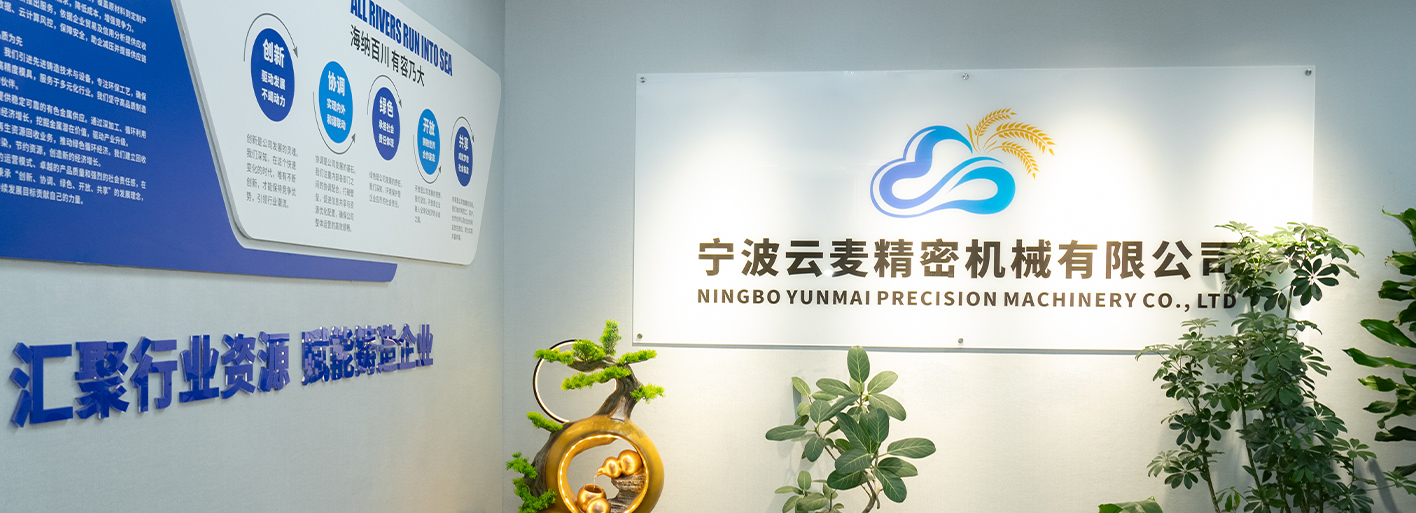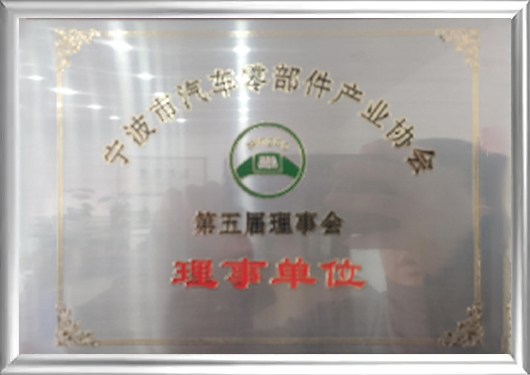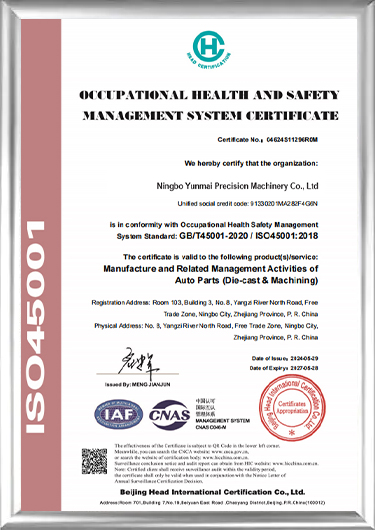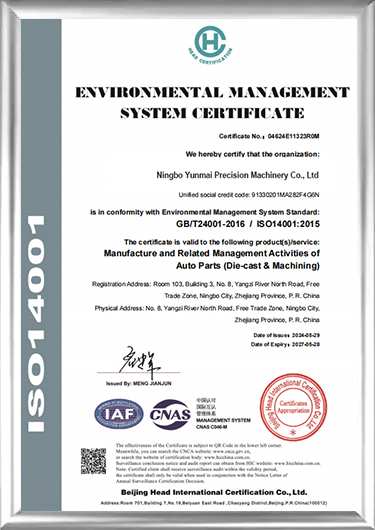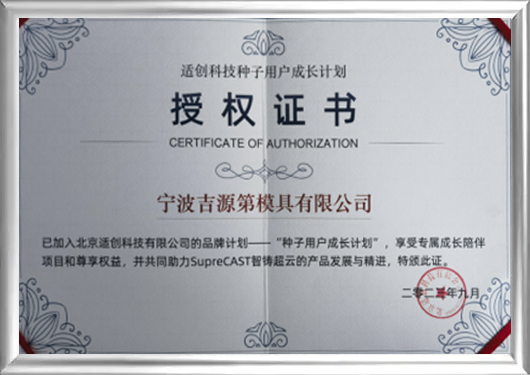Lamp components vary in design based on their specific functions. These components may include bases, casings, reflectors, heat sinks, and other structural or decorative parts. Each of these components must be able to withstand the operating environment of a lamp, including exposure to heat, electrical components, and possibly moisture. As such, the mold design must account for the particular functional needs of each part. For example, components like heat sinks must be designed to maximize surface area for better heat dissipation, while casings must offer strength and structural integrity to house electrical components. Ningbo Yunmai Precision Machinery Co., Ltd. specializes in designing molds for aluminum die-casting lamp components that balance both form and function. By understanding the specific needs of each part, they create molds that ensure high-quality production with minimal defects, while also optimizing the design for performance.
One of the primary considerations in mold design is the selection of materials. The molds themselves must be made from materials capable of withstanding the high temperatures and pressures associated with aluminum die casting. High-quality steel alloys are used for mold construction due to their ability to endure the harsh conditions of the casting process. However, the selection of the specific steel alloy depends on factors like the complexity of the component being molded, the number of cycles required, and the potential for wear over time. For aluminum die-casting molds for lamp components, Ningbo Yunmai Precision Machinery Co., Ltd. uses advanced steel materials known for their durability and ability to maintain precision over thousands of casting cycles. Their expertise in selecting the right material ensures that their molds can handle the pressure and temperature variations typical in the aluminum die-casting process.
Aluminum die casting is known for its ability to produce highly accurate and intricate parts. To achieve the desired precision, the mold design must be carefully planned to ensure that the final product meets strict dimensional tolerances. Lamp components often require tight tolerances, especially in areas where different parts must fit together or where the aesthetics of the product are critical. The process of designing for precision involves careful attention to the mold cavity’s geometry. The mold must be designed to ensure consistent material flow, cooling, and solidification, all of which affect the final dimensions of the cast part. Inadequate mold design can lead to issues such as warping, distortion, or dimensional inaccuracies, which are particularly problematic in lamp components where visual appearance and fitment are essential. Ningbo Yunmai Precision Machinery Co., Ltd. focuses heavily on ensuring that the molds they design for aluminum die-casting lamp components meet the highest standards of precision. Their experienced engineers work closely with clients to understand the specific requirements of the parts being produced and use state-of-the-art simulation tools to refine the mold design before production begins. This allows them to optimize material flow and minimize potential errors, ensuring that the final products adhere to strict dimensional tolerances.
The surface finish of aluminum die-cast parts plays a crucial role in the overall aesthetic of the final lamp components. In many cases, the surface finish not only affects the visual appeal of the part but also influences its ability to resist corrosion and wear. The surface finish requirement will depend on the specific application of the lamp component. For example, components that will be visible to the end-user, such as lamp casings and decorative elements, must have a smooth, attractive surface finish. In contrast, parts that are not visible may have less stringent surface finish requirements. The mold design must take into account the need for a high-quality surface finish. This involves ensuring that the mold cavity is polished to a fine degree to prevent defects like surface imperfections, which could affect the aesthetic appeal of the cast part. Special features like texturing or logos may need to be incorporated into the mold design to meet the desired finish. Ningbo Yunmai Precision Machinery Co., Ltd. understands the importance of achieving a superior surface finish in their aluminum die-casting molds for lamp components. They employ advanced polishing techniques and incorporate specific design elements into the mold to ensure that every part achieves the desired surface quality. Whether the part requires a high-gloss finish or a matte texture, their molds are designed to facilitate the precise finish needed for the application.
The cooling phase of the aluminum die-casting process is one of the most critical stages in determining the final quality of the part. During cooling, the molten aluminum solidifies inside the mold, and the rate of cooling directly affects the microstructure and mechanical properties of the cast part. Inaccurate or uneven cooling can lead to defects such as porosity, shrinkage, or warping. To ensure optimal cooling, the mold must be designed with an effective cooling system that allows for uniform temperature distribution throughout the cavity. This may include the use of cooling channels, strategically placed to direct the flow of coolant around critical areas of the mold. Proper cooling not only improves the quality of the cast part but also reduces cycle times, making the production process more efficient. Ningbo Yunmai Precision Machinery Co., Ltd. integrates advanced cooling techniques into their mold designs for aluminum die-casting lamp components. By optimizing the cooling system, they ensure that the mold delivers consistent results with minimal defects, reducing the need for rework and enhancing overall production efficiency.
The gate and runner system is essential in determining how molten aluminum flows into the mold cavity. The design of the gating system directly impacts the flow rate, pressure, and distribution of the molten metal, all of which influence the quality of the final part. A well-designed gating system can minimize defects such as air entrapment, cold shuts, and misruns, which can significantly affect the final part's performance. In aluminum die-casting, the gate and runner system must be carefully designed to ensure smooth and efficient flow of the molten metal into all areas of the mold. For lamp components, where the design can be intricate, ensuring uniform flow and filling of the mold cavity is critical to achieving high-quality results. Ningbo Yunmai Precision Machinery Co., Ltd. pays special attention to the design of gating systems in their aluminum die-casting molds. They use advanced simulation software to optimize the gating and runner design, ensuring that molten aluminum flows evenly throughout the mold cavity, minimizing the risk of defects, and improving the overall quality of the lamp components.
